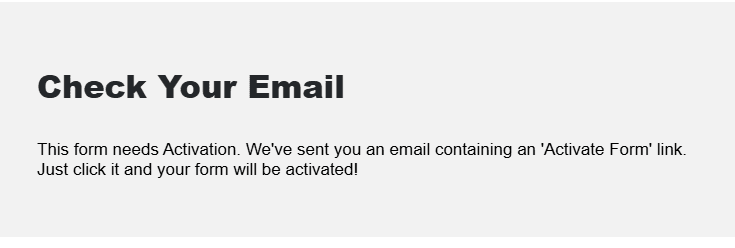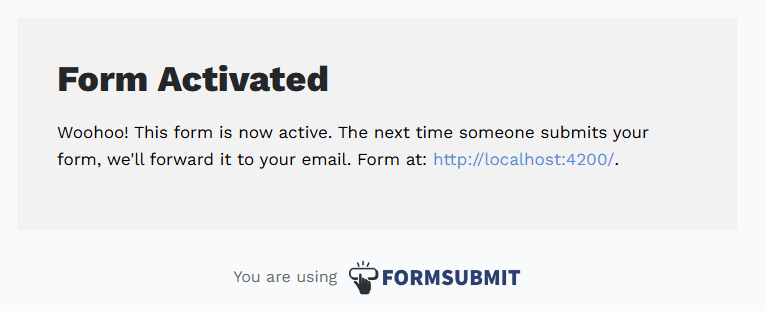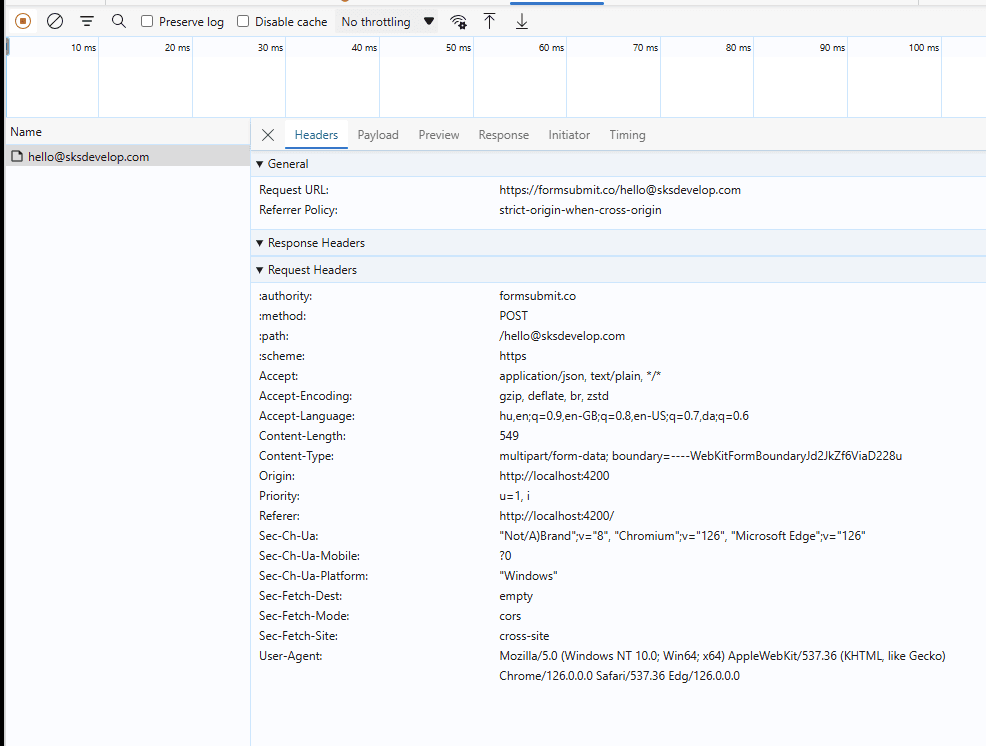Sending e-mails without backend the easiest way? Let's see:
Make a new service
ng g s formsubmit --skip-testsimport { Injectable } from '@angular/core';
import { HttpClient } from '@angular/common/http';
@Injectable({
providedIn: 'root'
})
export class FormsubmitService {
constructor(private http: HttpClient) { }
sendEmail(name: string, email: string, message: string) {
const formData = new FormData();
formData.append('name', name);
formData.append('email', email);
formData.append('message', message);
formData.append('_subject', 'New Message!');
formData.append('_captcha', 'false');
this.http.post('https://formsubmit.co/hello@sksdevelop.com', formData) //Set your own mail address here
.subscribe(
(response) => {
console.log('Form submitted successfully:', response); //for testing
},
(error) => {
console.error('Error submitting form:', error); //for testing
}
);
}
}
Make a new component if needed
ng g c contact --skip-tests🟣contact.component.html
<form (ngSubmit)="onSubmit()" #contactForm="ngForm">
<div>
<label for="name">Name:</label>
<input type="text" id="name" name="name" [(ngModel)]="name" required />
</div>
<div>
<label for="email">Email:</label>
<input type="email" id="email" name="email" [(ngModel)]="email" required />
</div>
<div>
<label for="message">Message:</label>
<textarea id="message" name="message" [(ngModel)]="message" required></textarea>
</div>
<button type="submit" [disabled]="contactForm.invalid">Send</button>
</form>🟣contact.component.ts
import { CommonModule } from '@angular/common'; import { Component } from '@angular/core'; import { FormsModule } from '@angular/forms'; import { FormsubmitService } from '../../services/formsubmit.service'; @Component({ selector: 'app-contact', standalone: true, imports: [CommonModule, FormsModule], templateUrl: './contact.component.html', styleUrl: './contact.component.css', animations: [] }) export class ContactComponent { name: string = ''; email: string = ''; message: string = ''; constructor(private formsubmitService: FormsubmitService) { } onSubmit() { this.formsubmitService.sendEmail(this.name, this.email, this.message); }
}
After testing you'll receive an Activation link to your given e-mail address







